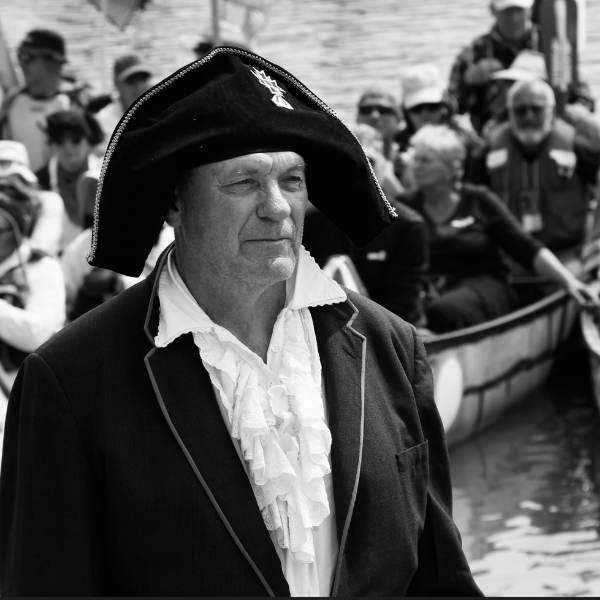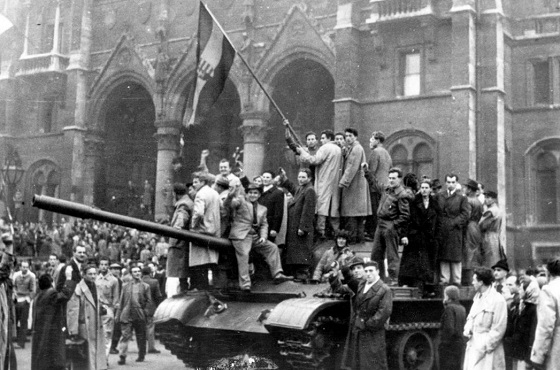History
Mitchell & Jewell, in Red Deer for Over 90 Glittering Years
Being Red Deer’s oldest locally owned retailer, there’s no shortage of stories to tell about this 94 year-old business. What started it all was Alexander Mitchell emigrating to Canada from Scotland in 1909- a decade later A.B. Mitchell Jewellers was born and 30 years after that, Alexander Mitchell partnered with Bob Jewell and Mitchell & Jewell was born.
Since the very beginning, Mitchell & Jewell has built a reputation on high ethical standards, exemplary service and of course, beautiful and distinctive jewelry. Whether you’re looking for something special, want to design a one-of-a-kind item, or even want to re-make your old jewellery into something new and exciting, the skilled staff at Mitchell & Jewell will work with you to find the perfect piece for you or someone special.
And this holiday season at Mitchell & Jewell is giving you good reason to hope for a white Christmas… you have a chance to win your entire purchase! If it snows 7.5 centimetres (approx. 3 inches) on January 1st, 2017 at the Red Deer Regional Airport, all purchases are FREE- yes, that means each purchase paid in full between November 1st and December 24th, 2016 will be totally refunded!
So make Mitchell & Jewell a stop on your Christmas shopping trip and cross your fingers that the snow starts falling!
*THIS CONTEST IS NOW CLOSED. CONGRATULATIONS TO OUR WINNERS! CHECK BACK FOR MORE GREAT CONTESTS!*
Enter to WIN 1 of 3 $50 Gift Certificates to Mitchell & Jewell! All you have to do is send us an email to [email protected], with MITCHELL & JEWELL in the subject line. Good Luck!
No purchase necessary. Contest closes on December 21, 2016 at 12:00 pm MT. Open to legal residents of Alberta, Canada who are eighteen (18) years of age or older. Approximate retail value of each prize is $50.00. Odds of winning will depend upon the total number of eligible entries received during the contest period.
Community
New Documentary “Cooking with Hot Stones” Explores History of Fort Assiniboine, Alberta

February 14, 2025 – Alberta, Canada – A compelling new documentary, Cooking with Hot Stones: 200th Anniversary of Fort Assiniboine, is set to air on Wild TV, RFD TV Canada, Cowboy Channel Canada, and you can click here to stream for FREE on Wild TV’s streaming service, Wild TV+. This engaging one-hour feature will take viewers on a journey through time, exploring Fort Assiniboine’s rich history from 1823 to 2023.
Fort Assiniboine is a significant landmark in Alberta, playing a crucial role in Indigenous history, the fur trade, and the western expansion of Canada. This documentary captures the spirit of the region, illustrating how it has evolved over two centuries and how it continues to shape the cultural fabric of the province today.
Wild TV will make the documentary free to stream on Wild TV+ on February 14th so that it can be easily accessed in classrooms and other educational settings throughout the region, ensuring the historical significance of Fort Assiniboine reaches a wider audience.
Produced by Western Directives Inc., Cooking with Hot Stones: 200th Anniversary of Fort Assiniboine brings historical moments to life with vivid storytelling, expert interviews, and breathtaking cinematography.
“We are very excited to partner with Wild TV as part of our one hour documentary production. Based in Alberta, we respect the hard work and quality programming that Wild TV brings to a national audience. With the broadcast opportunity, Wild TV gives our production the ability to entertain and educate Canadians across the country on multiple platforms,” said Tim McKort, Producer at Western Directives.
Scott Stirling, Vice President of Wild TV, also expressed enthusiasm for the project: “At Wild TV, we are passionate about telling Canadian stories that resonate with our audiences. This documentary not only highlights a crucial piece of our nation’s history but also celebrates the resilience and contributions of Indigenous peoples, traders, and settlers who shaped the land we call home today. We are proud to bring Cooking with Hot Stones: 200th Anniversary of Fort Assiniboine to our viewers across Canada.”
Airtimes for Wild TV can be found here.
For airtimes on RFD TV Canada, click here.
For airtimes on Cowboy Channel Canada, visit CCC’s schedule.
Frontier Centre for Public Policy
Hungarian Revolution of 1956: A Valiant Effort to Overthrow Communist Rule

Civilians wave Hungary’s national flag from a captured Soviet tank in Budapest’s main square during the anti-communist uprising of October 1956. AP Photo
From the Frontier Centre for Public Policy
By Gerry Bowler
For a time, Moscow seemed willing to accept change in Hungary, but when Nagy announced that his country would leave the Warsaw Pact and become neutral in the Cold War, that was a bridge too far for Khrushchev.
After World War II ended in the summer of 1945, the Soviet Red Army found itself to be in possession of Eastern Europe. In the next few years, the USSR extinguished the young democracies in Poland, Czechoslovakia, Romania, Latvia, Lithuania, and Estonia, while imposing Stalinist governments on autocracies such as Bulgaria and Hungary. With Marxist regimes taking over in eastern Germany, and Albania and Yugoslavia as well, Winston Churchill spoke truly when he said that “from Stettin the Baltic to Trieste in the Adriatic, an iron curtain has descended across the continent.”
In many of these countries, there was considerable resentment over the Russian occupation. In the Baltic republics, Romania, Croatia, Belarus, Poland, and Ukraine, doomed anti-Soviet guerilla movements with names like the “Forest Brothers,” the “Cursed Soldiers,” or “Crusaders,” fought underground wars that\ lasted for years. In June 1953 in East Berlin, workers rose up in protests against their communist masters, sparking a short-lived rebellion that spread to hundreds of towns before being crushed by Russian tanks. The most serious of these insurrections was the Hungarian Revolution of 1956. By 1956, there were stirrings of discontent in the Hungarian People’s Republic. Under the state control of industry, forced agricultural collectivization, and the shipping of produce to the Soviet Union, the economy was in bad shape. The supply of consumer goods was low and standards of living were dropping. Secret police surveillance of the population was harsh, while many Hungarians resented the suppression of religion and the mandatory instruction of the Russian language in schools. As news leaked out about Soviet Premier Nikita Khrushchev’s denunciation of Stalin in the so-called “Secret Speech,” hopes grew that reform of the communist system was possible.
Marxist intellectuals began to form study circles to discuss a new path for Hungarian socialism, but their cautious proposals were suddenly overtaken by demands for change by young people. On Oct. 22, 1956, students at the Technical University of Budapest drew up a list of demands for change known as the “Sixteen Points.” They included free elections, a withdrawal of Soviet troops, free speech, and an improvement in economic conditions.
On the afternoon of the next day, these points were read out to a crowd of 20,000 who had gathered at the statue of a leader of the Hungarian rebellion of 1848. By 6 p.m., when the students marched on the Parliament Building, the crowd had grown to around 200,000 people. This alarmed the government, and later that evening Communist Party leader Erno Gero took to the radio to condemn the Sixteen Points. In reaction, mobs tore down an enormous statue of Stalin.

People surround the decapitated head of a huge statue of Josef Stalin in Budapest during the Hungarian Revolution in 1956. Daniel Sego (second L), who cut off the head, is spitting on the statue. Hulton Archive/Getty Images
On the night of Oct. 23, crowds gathered outside the state broadcaster, Radio Budapest, to demand that the Sixteen Points be sent out over the air. The secret police fired on the protesters, killing a number of them. This enraged the demonstrators who set fire to police cars and seized arms from military depots. Army units ordered to support the secret police rebelled and joined the protest. The government floundered; on the one hand, they called Soviet tanks into Budapest; on the other hand, they appointed Imre Nagy, seen as a popular reformer, as prime minister.
As barricades were being erected by protesters and shots were being exchanged with secret police units, Nagy was negotiating with the Soviets who agreed that they would withdraw their tanks from the capital. Over the next few days, the rebellion spread; factories were seized, Communist Party newspapers and headquarters were attacked, and known communists and secret police agents were murdered. The new prime minister released political prisoners and promised the establishment of democracy, with freedom of speech and religion.
For a time, Moscow seemed willing to accept change in Hungary, but when Nagy announced that his country would leave the Warsaw Pact and become neutral in the Cold War, that was a bridge too far for Khrushchev. Fearing the collapse of the entire Soviet bloc, he made plans for an invasion of Hungary. By Nov. 3, the Red Army had surrounded Budapest, and the next day heavy fighting erupted as armoured columns entered the city. Some units of the Hungarian army fought back, joined by thousands of civilians, but the end was predictable. After a week of battles, with over 20,000 dead and wounded, resistance crumbled. A new Soviet-approved government under János Kádár purged the army and Communist Party, arrested thousands, and executed rebel leaders including Nagy.
Hundreds of thousands of refugees fled, many of them settling in Canada and the United States. World condemnation of the USSR was strong; critics of the Soviets included many communists in the West who resigned their party membership. Not until the collapse of the Soviet hold on Eastern Europe in 1989 did Hungarians get another taste of freedom.
Published in the Epoch Times.
Gerry Bowler, historian, is a Senior Fellow at the Frontier Centre for Public Policy.
-

 2025 Federal Election2 days ago
2025 Federal Election2 days agoThe Federal Brief That Should Sink Carney
-

 2025 Federal Election2 days ago
2025 Federal Election2 days agoHow Canada’s Mainstream Media Lost the Public Trust
-

 2025 Federal Election2 days ago
2025 Federal Election2 days agoOttawa Confirms China interfering with 2025 federal election: Beijing Seeks to Block Joe Tay’s Election
-

 Media24 hours ago
Media24 hours agoCBC retracts false claims about residential schools after accusing Rebel News of ‘misinformation’
-

 John Stossel2 days ago
John Stossel2 days agoClimate Change Myths Part 2: Wildfires, Drought, Rising Sea Level, and Coral Reefs
-

 2025 Federal Election2 days ago
2025 Federal Election2 days agoReal Homes vs. Modular Shoeboxes: The Housing Battle Between Poilievre and Carney
-

 COVID-192 days ago
COVID-192 days agoNearly Half of “COVID-19 Deaths” Were Not Due to COVID-19 – Scientific Reports Journal
-

 Bjorn Lomborg23 hours ago
Bjorn Lomborg23 hours agoNet zero’s cost-benefit ratio is CRAZY high

